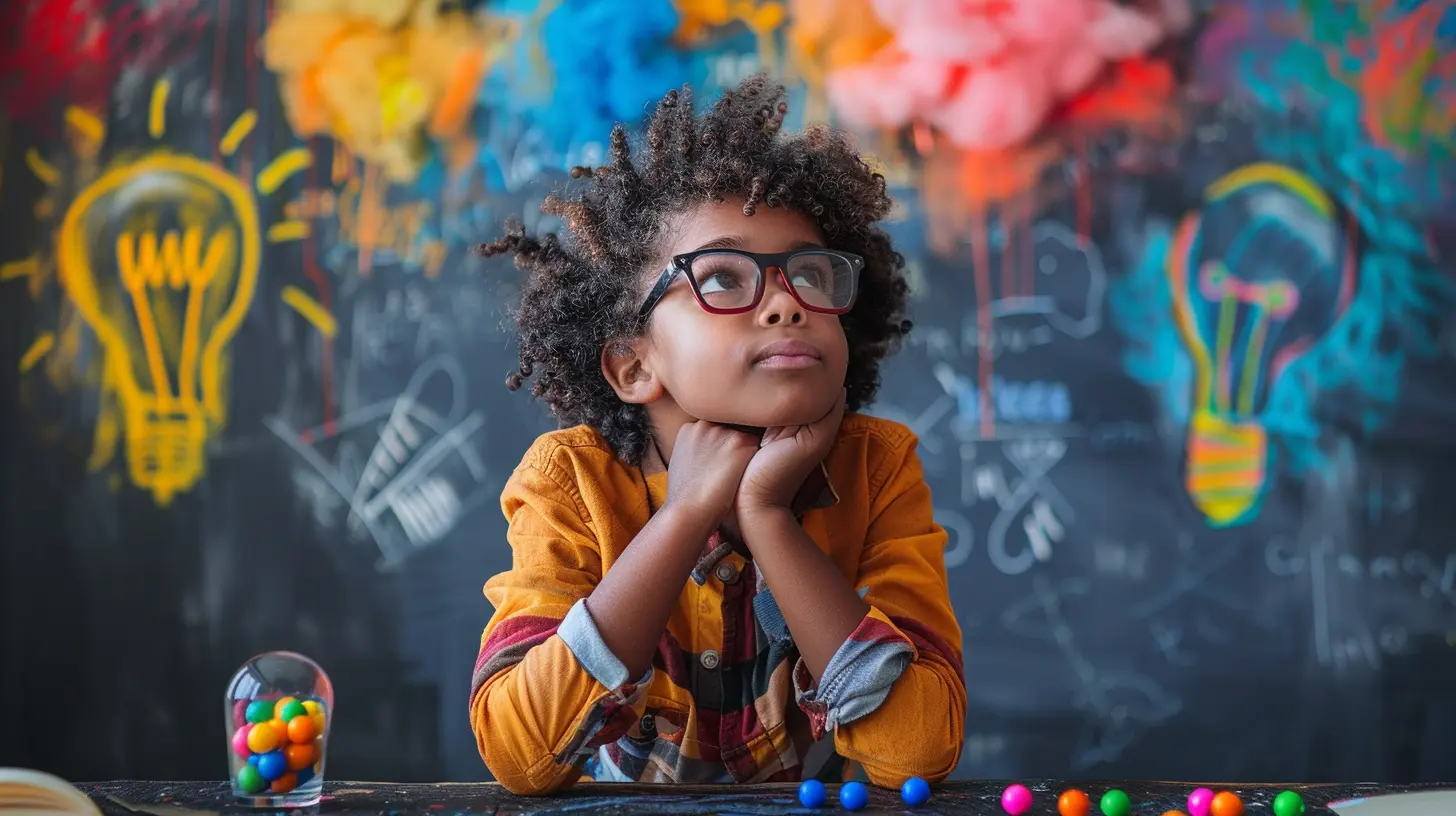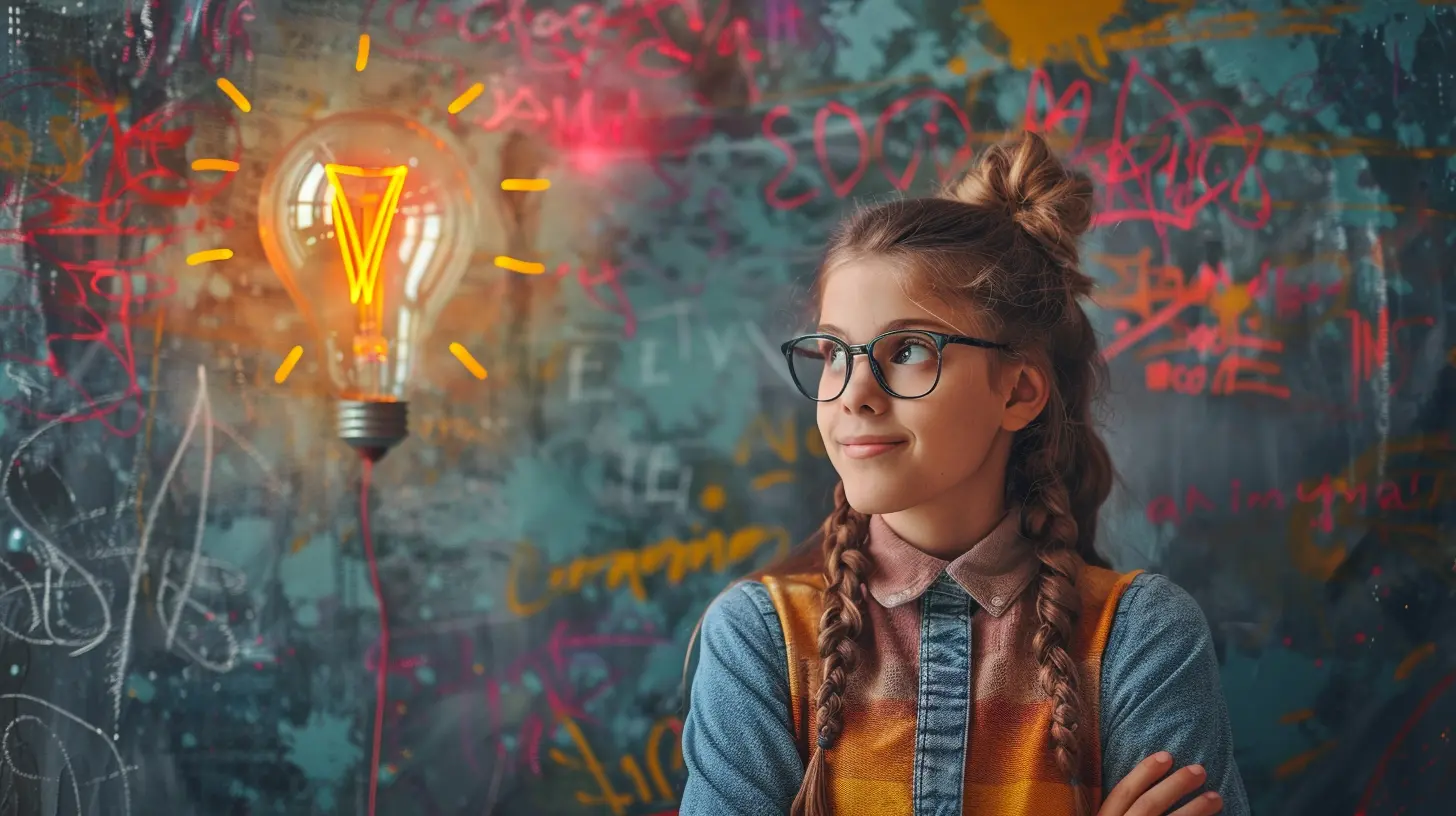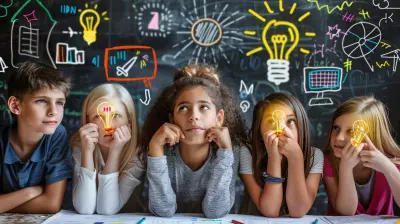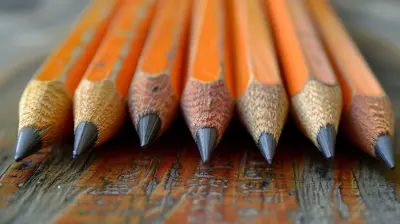How Creative Teachers Inspire Creative Students
10 August 2025
In today's fast-paced world, creativity is more important than ever. It’s not just about being good at painting or writing poetry; creativity is a crucial skill that influences problem-solving, critical thinking, and even innovation in technology. But where does this creativity start? More often than not, it begins in the classroom, nurtured by teachers who know how to spark those creative flames in their students.
You’ve probably heard the phrase, "Teachers shape the future." While every teacher plays a role in shaping young minds, creative teachers go a step further by inspiring their students to think outside the box. They don’t just teach the curriculum; they make learning an exciting adventure. But how exactly do creative teachers inspire creative students? Let’s dive in and explore this in detail.
What Is Creativity in Education?
Before we jump into how teachers inspire creativity, let’s first define what we mean by "creativity in education." Creativity isn't just about artistic expression. It’s about encouraging students to view problems from different angles, to think critically, and to come up with innovative solutions.When we talk about creativity in education, we’re referring to fostering an environment where students feel free to express themselves, experiment with new ideas, and take risks without fear of failure. It’s about breaking away from traditional, rigid teaching methods and embracing flexibility, innovation, and collaboration.
But here's the catch: Creativity can't be forced. It needs to be cultivated, and that’s where creative teachers come into play.
The Role of a Creative Teacher
1. Encouraging Curiosity and Exploration
Curiosity is the mother of invention, right? A creative teacher understands this and fuels that natural curiosity in students. They don’t just deliver facts and information; they ask open-ended questions and encourage students to explore further.Instead of just teaching students what to think, creative teachers focus on teaching them how to think. They might ask:
- "What do you think will happen if we try this?"
- "How would you solve this problem differently?"
These questions spark curiosity and invite students to think more deeply about a subject. As a result, students feel more engaged and open to exploring new ideas.
2. Creating a Safe Space for Risk-Taking
Let’s face it: Creativity often involves failure. How many times did Thomas Edison fail before he finally invented the lightbulb? A creative teacher recognizes that mistakes are part of the learning process and creates an environment where students feel safe enough to take risks.When students are afraid of failing, they tend to stick to the “safe” answers, the ones they know will please the teacher. But in a classroom where failure is seen as a step toward success, students are more likely to take creative risks. They’ll try new approaches, even if they might not work the first time.
By fostering this kind of growth mindset, creative teachers help students become more resilient and open to experimentation, which are essential traits for creativity.
3. Emphasizing Hands-On Learning
Have you ever noticed how much kids love to play with blocks, paint, or play instruments? That’s because hands-on activities stimulate their creativity. Creative teachers know this and frequently incorporate hands-on learning into their lessons.For example, instead of just lecturing about the water cycle, a creative teacher might have students build a mini ecosystem to observe how water moves through the environment. Or in a literature class, instead of just reading a book, students might act out scenes or create visual art pieces that represent themes from the story.
These kinds of activities encourage students to make connections between ideas and think creatively about how to apply what they’ve learned in real-world situations.
Techniques Creative Teachers Use to Inspire Creativity
1. Incorporating Technology and Digital Tools
In the age of technology, creative teachers are often ahead of the curve when it comes to using digital tools. They know that technology can be an incredible resource for fostering creativity, whether it's through educational apps, online collaboration tools, or multimedia projects.For instance, teachers might use tools like Google Docs for collaborative writing, or encourage students to create podcasts, blogs, or video presentations instead of sticking to the traditional essay format. This gives students the freedom to express their ideas in different formats and think creatively about how to present information.
2. Encouraging Collaboration
While we often think of creativity as a solo endeavor, collaboration can actually enhance creativity. Creative teachers know that brainstorming with peers can lead to new ideas and perspectives that students might not have considered on their own.Group projects, discussions, and peer feedback are all ways that creative teachers encourage collaboration in the classroom. By working together, students learn to appreciate different viewpoints, problem-solve as a team, and come up with more innovative solutions.
3. Breaking Away from Routine
Routine can stifle creativity. Think about it: If you did the exact same thing every day, would you feel energized and inspired? Probably not. Creative teachers understand this and frequently shake things up in the classroom.They might rearrange the seating, use unconventional materials for lessons, or take learning outside the four walls of the classroom. They might also change the structure of lessons, switching from lectures to group projects or incorporating games and competitions.
These small changes can have a big impact. When students don't know exactly what to expect, they're more likely to stay engaged and think creatively.
Real-Life Examples of Creative Teachers
1. The Drama Teacher Who Turned Shakespeare Into a Rap Battle
Take Mr. Johnson, a high school drama teacher. He knew that his students found Shakespeare boring, so instead of slogging through "Romeo and Juliet" in the usual way, he encouraged his students to turn key scenes into rap battles.Not only did this make Shakespeare more relatable, but it also allowed students to think creatively about language, rhythm, and storytelling. By the end of the unit, students who had originally dreaded reading Shakespeare were eager to perform their scenes in front of the class.
2. The Science Teacher Who Used Gardening to Teach Biology
Mrs. Smith, a middle school science teacher, wanted to teach her students about ecosystems and plant biology, but she didn’t want to rely solely on textbooks. Instead, she created a classroom garden where students planted and cared for their own plants.Over time, students learned about photosynthesis, the water cycle, and the importance of biodiversity—all while getting their hands dirty. The garden became a living laboratory, and students were much more engaged than they would have been from reading a textbook alone.
Why Creativity in Teaching Matters
You might be thinking, "Okay, but why does all this really matter?" The truth is, fostering creativity in students has long-term benefits that go beyond the classroom.1. Problem-Solving Skills
In the real world, problems are rarely simple, and they often require creative solutions. By encouraging creativity, teachers help students develop the kind of problem-solving skills that will benefit them in their future careers, whether they become engineers, artists, or entrepreneurs.2. Innovation
Creative students are more likely to become innovators. They’re the ones who will push boundaries, challenge the status quo, and come up with new ideas that can change the world. In today’s rapidly changing job market, innovation is key to staying relevant.3. Personal Development
Finally, creativity helps students develop a sense of self-expression and confidence. When students feel free to express their ideas and take risks, they become more confident in their abilities. This confidence can carry over into other areas of life, leading to personal growth and success.How Can Parents Support Creative Teachers?
While teachers play a significant role in fostering creativity, parents can also help by supporting creative learning at home. Encourage your child to ask questions, explore new hobbies, and think critically about the world around them.You can also collaborate with your child’s teacher to provide materials or experiences that might spark creativity—like visiting a museum, attending a play, or even just providing art supplies for home projects.
Conclusion
Creative teachers are essential in inspiring the next generation of thinkers, problem-solvers, and innovators. By encouraging curiosity, creating a safe space for risk-taking, and incorporating hands-on learning, they help students develop the creative skills they’ll need to succeed in life.But it’s not just about the teachers. Parents, communities, and even the students themselves play a role in fostering an environment where creativity can thrive. So, whether you’re a teacher, a parent, or a student, remember: Creativity is a journey, not a destination.
all images in this post were generated using AI tools
Category:
Creativity In EducationAuthor:

Fiona McFarlin
Discussion
rate this article
1 comments
Axel McGuffin
Creative teachers are like spark plugs—without them, students’ ideas would just be stalled out engines!
August 18, 2025 at 3:48 AM

Fiona McFarlin
Absolutely! Creative teachers ignite students' passions and fuel their imaginations, helping ideas come to life.


